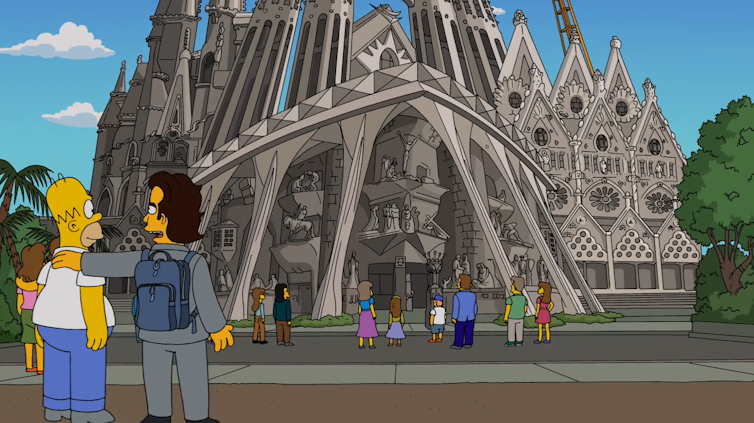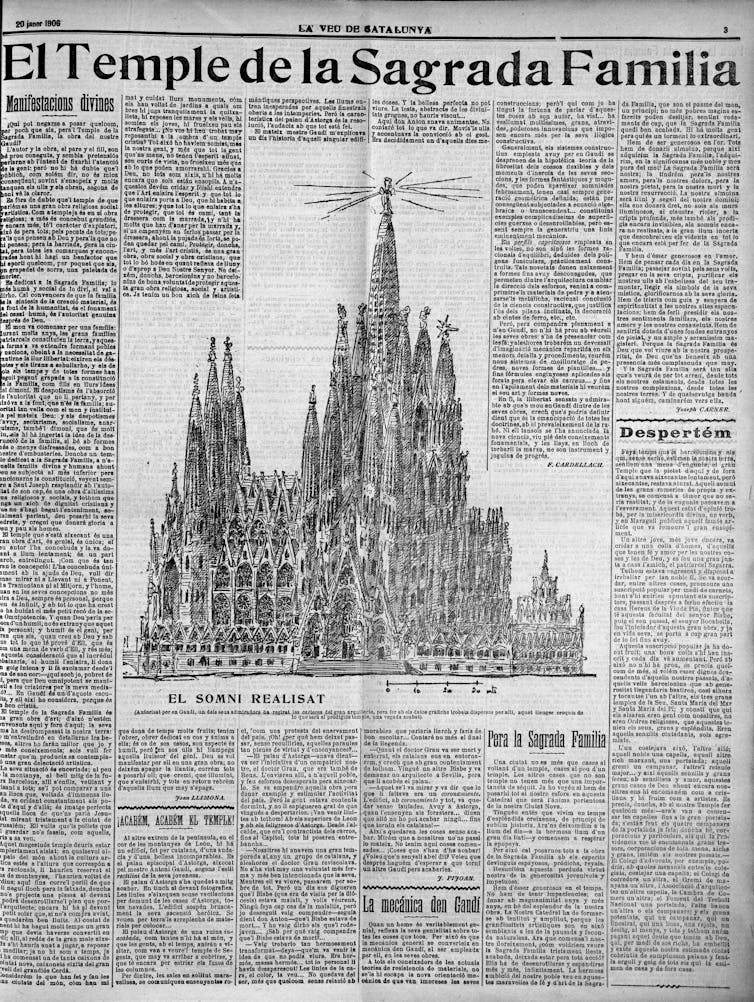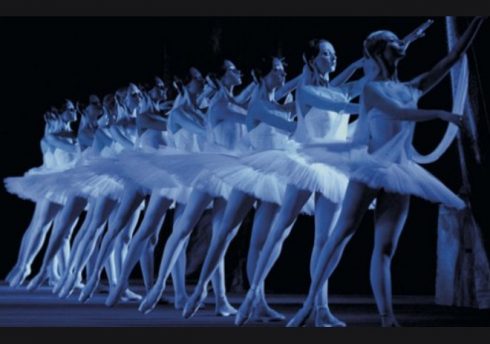THE Sagrada Familia, Antoni Gaudí’s Catalan masterpiece, recently celebrated the completion of the Mare de Déu tower by hoisting a giant, 12-pointed star of metal and textured glass to its summit.

After 140 years of construction on the church, this is the first of its six main towers to be finished and its outsized decoration now lights up the Barcelona nightscape.
Not everyone is pleased though. The installation has been met with criticism about the ongoing building works and the adverse impact of the tourism it generates on the local area.
The Sagrada Familia has been a magnet for controversy since well before Gaudí was commissioned to build it in 1883. As my research shows, the Sagrada Familia has become both a myth and a tool co-opted by different political movements and ideological campaigns.

Conservative roots
The Sagrada Familia was originally conceived in 1881 by philanthropist and bookseller Josep Maria Bocabella as an expiatory temple – a place of atonement – devoted to the cult of the Holy Family (the child Jesus, his mother, the Virgin Mary and his father, St Joseph). In buying entry tickets, visitors, still today, effectively atone for their sins.
The decline of the Spanish empire in the 19th century had given rise to powerful ideological and political debates across Spain. The late 1870s saw the emergence of left-wing and anarchist movements, against which Bocabella aimed to make a stand with a new basilica.
To that end, in 1882, he bought a plot of land just outside the Eixample district of the city. He created a foundation to manage the works and appointed the architect Francisco de Paula Villar y Lozano. They envisaged an edifice in the Gothic revival style.
Lozano, however, only got as far the building’s foundations and the crypt before public disagreements about its construction system and finances led the foundation to ask Gaudí to take over.
Gaudí attuned his designs to both Bocabella’s ideals and the rightwing political and ideological movements sweeping through Catalonia at the time. He referenced the local Montserrat mountain range – which lies inland from Barcelona – in his radical new designs for the building’s sculptural mass and its elevation.
He also proposed that the church be built as a succession of single façades, each replete with a carefully curated, baroque medley of sculptures. In this way, even while under construction, the basilica would instruct visitors in the Catholic values associated with the Holy Family.

A myth is born
Until this moment the Lliga Catalanista, the main rightwing, nationalist party in Catalonia, had seen Gaudí as an outsider. Its leaders had labelled his architecture disgusting. But as he became ever more popular and his work more powerful, the Sagrada Familia appeared as a useful means for spreading their message.
The Lliga started presenting Gaudí as “the genius of Catalonia”, claiming that his basilica was a classical temple that belonged to all Catalans. It urged the public to contribute financially to its construction, belabouring the fact that in doing so, they would be buying forgiveness.
When Gaudí passed away in 1926, Barcelona was at the centre of the anarchist and left-wing movements in Europe. In 1936, at the outbreak of the Spanish civil war, the construction site was vandalised by anarchist groups. Gaudí’s studio was burned down and all the drawings and models it contained were destroyed.

The post-war period saw construction resume and the myth of Gaudí take shape. In the absence of the plans and archival materials lost in the fire, architects and historians began to interpret Gaudí’s ideas to suit their own agendas. In 1964, an international group of architects and intellectuals called for work on the basilica to be halted. Most of them deplored the quality of these post-Gaudí additions.
Tourist destination
Tourism has placed ever greater strains on the site, with neighbourhood associations also bemoaning the lack of planning permits and payment of building permit fees. Inscribing the basilica into the surrounding urban context remains a primary challenge.
For the temple’s main façade and its staircase to be built, a series of housing blocks is set to be demolished, as defined in the unique leasehold terms under which they were built during the second half of the 20th century. At the time the completion of the temple seemed too far in the future. Now, with an end date set – just before the pandemic outbreak – for 2026, it’s a very real problem.

Until COVID brought the industry to a halt, ever-increasing visitor numbers ensured a vast and steady stream of income to keep construction underway. In 2019 alone, 4.5 million people came to the site.
The pandemic has of course been a major impediment. Visitors dropped to only 810,000 in 2020 and work on the church has been put on hold until 2024. However, if the church’s history is anything to go by, the Sagrada Familia will endure. It has become a myth equalled only by that of its creator, Gaudí. And like any myth, it is impervious to historical fact.
Article by Josep-Maria Garcia Fuentes, Senior Lecturer in Architecture, Newcastle University
This article is republished from The Conversation under a Creative Commons license. Read the original article.
Click here to read more Barcelona News from The Olive Press.








